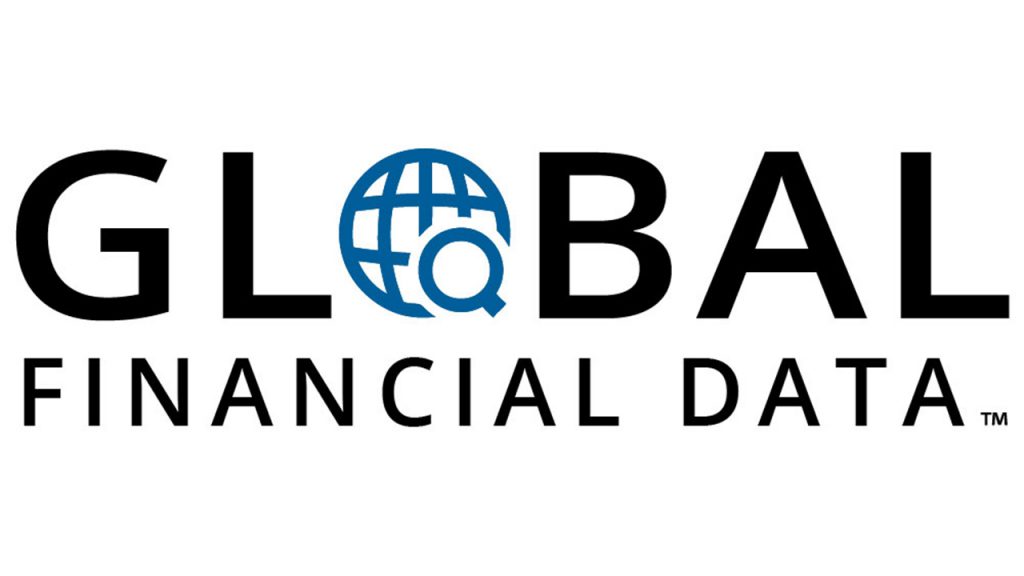Global Financial Data has added 40 CAPE Ratios to its database, primarily for OECD countries.
The CAPE Ratio is the cyclically-adjusted price-to-earnings ratio, also known as the Shiller P/E, which was developed by the Nobel Prize winning economist Robert Shiller. The CAPE Ratio is a moving average and is calculated as the price divided by the average of ten years of earnings. Graham and Dodd, in their classic book, Security Analysis, argued in favor of smoothing out P/E Ratios to avoid the volatility inherent in the ratio.
The CAPE Ratios for the United States have the most history, going back to 1881 for the S&P Composite and 1929 for the Dow Jones Industrial Average. CAPE Ratios for the United Kingdom begin in 1937, and CAPE Ratios for Canada and Japan begin in 1966. CAPE Ratios for many other developed countries begin in 1979 and those for emerging markets begin in 1998. Global Financial Data has added a Main Indicator for the CAPE Ratios so you can easily access the data.
Global Financial Data has added 20,000 files covering 40 developed and developing OECD countries.
Over 2000 macroeconomic files relating to GDP, the balance of payments, and imports and exports have been added, covering sub-sectors of GDP, such as:
- GDP Deflators
- Exports of Goods and Services
- Government Final Consumption
- Fixed Capital Formation
- Private Final Consumption
- Country
- Age Group
- Sex
Different Industries (Agriculture, Construction and Manufacturing)
This data also includes measures of the active and inactive population, activity and inactivity rates, unemployed population, working age population, and labor costs by age, sex, and country. Not only are actual numbers included, but employment and unemployment rates. Information on surveys of businesses and consumers have been added. Business opinion surveys cover business conditions, capacity utilization, business confidence, employment plans, future orders, future production and selling prices. Information is drawn from construction companies, manufacturing companies, retail businesses, and services. Consumer opinion surveys covering confidence in the economy, consumer prices, and the general economic situation are included. Over 1600 files on production and output are highlighted. These additions include data on manufacturing inventories, production of durable and non-durable consumer goods, car registrations, sales volume of manufactured and intermediate goods, total construction, residential construction, electricity and energy production, manufacturing production, mining production, retail sales, and production of intermediate and investment goods. Finally, over 500 files on Consumer Prices and Producer Prices have been researched. The Producer Price Indices look at sub-categories of the overall Producer Price indices for the OECD countries, and include information on Durable and Non-Durable Consumer Goods, Intermediate Goods, Investment Goods, Mining and Manufacturing. Without this economic data covering the OECD countries your market analysis will be incomplete. To see GFD’s OECD data in action, call today to speak to one of our experts at 877-DATA-999 or 949-542-4200.NO EXCHANGE BIAS, NO SURVIVORSHIP BIAS
Global Financial Data now offers historical price data on common stocks for all stock exchanges in the United States since 1915. No other company provides such a comprehensive record of US Stocks encompassing regional exchanges such as the Boston, Chicago, Philadelphia or Los Angeles.PROBLEMS IN EQUITY DATA
Inherent problems occur within traditional equity data feeds due to the existence of an exchange bias and the survivorship bias. Only GFD has researched, compiled, generated and produced complete, unabridged individual data sets on U.S. Stock Markets. Coverage includes the- New York Stock Exchange
- Curb/American Stock Exchange
- Regional Stock Exchanges, and
- NASDAQ
WHAT ARE YOU MISSING?
Until the 1970s, the American Stock Exchange, called the New York Curb until 1953, listed more foreign issues than all other US stock exchanges combined. Furthermore, many oil and mining stocks, many small-cap companies, many technology companies, and many other types of companies that did not qualify for listing on the New York Stock Exchange listed on the Curb/AMEX. None of the stocks which were listed on the Curb/AMEX were concurrently listed on the NYSE. In 1972, when the NASDAQ was founded, over 1300 companies, whose total capitalization was half that of the NYSE, were listed on the AMEX. Data for the Curb/AMEX is monthly from 1915 until 1961, and daily since January 1962. Excluding the market data covering the Curb/AMEX no longer provides adequate coverage of the U.S. market. To see GFD’s U.S. Stocks in action, call today to speak to one of our experts at 877-DATA-999 or 949-542-4200.GFD TRIVIA:
The American Stock Exchange was originally called the New York Curb since it traded stocks that were not listed on the New York Stock Exchange outside of the building that housed the NYSE. The New York Curb was established in 1908, moved indoors in 1921, changed its name to the New York Curb Exchange in 1929 and to the American Stock Exchange in 1953. The AMEX merged with the New York Stock Exchange in 2008. It was 100 years ago, in 1914, that the Gold Standard died. When World War I began, most countries went off the Gold Standard and attempts to return to a Gold Standard since have all failed. Some people have called for a return to the Gold Standard as a way of disciplining governments and ensuring that they do not inflate their way out of their current fiscal problems. If it were only that easy.
What many people don’t understand is that in the long run, the International Gold Standard was a very brief phenomenon, and the fact that the world moved to a Gold Standard in the late 1800s was a sign of weakness in the role of gold and silver in the economy, not of strength. The reality was that Europe was on a bimetallic standard, not a Gold Standard, from the Middle Ages until World War I, and gold triumphed in the nineteenth century because bimetallism had failed. This should have been taken as a sign that the gold standard too would inevitably fail, not that it was the result of teleological inevitability.
It was 100 years ago, in 1914, that the Gold Standard died. When World War I began, most countries went off the Gold Standard and attempts to return to a Gold Standard since have all failed. Some people have called for a return to the Gold Standard as a way of disciplining governments and ensuring that they do not inflate their way out of their current fiscal problems. If it were only that easy.
What many people don’t understand is that in the long run, the International Gold Standard was a very brief phenomenon, and the fact that the world moved to a Gold Standard in the late 1800s was a sign of weakness in the role of gold and silver in the economy, not of strength. The reality was that Europe was on a bimetallic standard, not a Gold Standard, from the Middle Ages until World War I, and gold triumphed in the nineteenth century because bimetallism had failed. This should have been taken as a sign that the gold standard too would inevitably fail, not that it was the result of teleological inevitability.
The discovery of America released not only the gold of the Americas which the Spaniards seized, but the silver of Potosí and Mexico which supplemented the silver mines of Germany that produced silver Thalers. Galleons filled with silver crossed the seas to Europe and China every year, causing global inflation in the seventeenth century.
The chart, which uses the gold/silver ratio for the United Kingdom through 1800 and the United States after that, shows that between 1250 and 1850, the value of gold relative to silver gradually increased, rising from around 10 to 1 in 1250 to 15 to 1 around 1850. Despite all the discoveries of gold and silver, the seizing of gold and silver by conquerors from the conquered, or the changes in the global economy during those intervening 600 years, the ratio of the price of gold to silver saw no dramatic changes.
It wasn’t that countries chose to move to the Gold Standard because it was the right thing to do, but because they had no choice. The collapse in the price of silver made silver a token commodity. The relationship between gold and silver that had held for 600 years was irrevocably broken. Although almost every developed country was on the Gold Standard by 1900, few realized it was the lull before the storm. When World War I broke out in August 1914, the Gold Standard was dead.
Attempts to resurrect the Gold Standard after World War I, World War II and today were doomed to fail because the relationship between gold and silver had been changed forever. Could a country like the United States return to a Gold Standard? In theory, yes, as I have demonstrated in my paper “Returning to the Gold Standard in Five Easy Steps.” In practice, it is highly unlikely.




